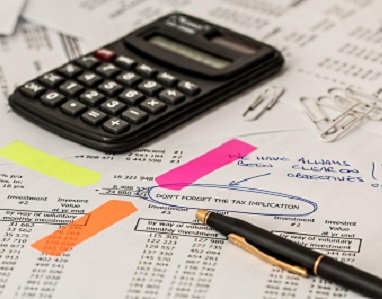Invest confidently in real estate
Invest confidently in real estate

Deprecation recapture is an important tax event that happens when you sell an investment property. The annual depreciation deduction lowers the taxable ordinary income earned from a rental property during each tax year. You can read all about deductions, and how to deduct deprecation in this article. Depreciation recapture is a provision that allows the IRS to collect taxes - at the point of selling the property - using the depreciated cost-basis. Put another way, depreciation recapture will lower the cost-basis of the property at the time you sell, which will potentially increase the gain. Recaptured depreciation is taxed as ordinary income – not capital gains.
To start with, here is a quick review of the difference between capital gains tax and ordinary income tax. Capital gains tax is applied to the profit – or the appreciation – on the sale of an investment property. Depending on the length of ownership there could be a short-term gain or a long-term gain, which are taxed at different rates. Ordinary income tax is paid using a rate ladder depending on how much income you earn in a year – the more you earn, the higher the rate you’ll pay on that income.
Because the IRS allows for the annual depreciation deduction over the years of service of an investment property, that deprecation will be accounted for in the tax year of the sale of the property. The recaptured depreciation – the sum of the deprecation you’ve taken over the ownership of the property – will be taxed as ordinary income in the tax year of the sale. That depreciation will also reduce the cost-basis of the property, which will increase the amount of the capital gain you may incur from the sale.
In this section you’ll see how to calculate deprecation recapture on a property that is being sold after being owned and depreciated for 7 years.
Here are some variables needed for the example:
- purchase price $415,000
- land value: $83,000
- initial improvement (new kitchen prior to putting property in operation): $25,000
- closing costs: $22,500
- title recording fees: $2,500
One way to calculate total deprecation is to add up the actual deprecation claimed over your ownership of the investment. If you’d like to estimate this for a property you’re considering, you can also calculate it in a few steps. Land does not depreciate, so you must find the property value by removing the value of the land. You can also include initial improvement as an increase in the building’s value. In this example, the property value is $415,000 + $25,000 - $83,000, = building value of $357,000. The next step is to calculate the estimated annual deprecation. We know that for each year, this property was eligible for deprecation of $357,000 / 27.5 or $12,982.
To calculate the total depreciation, you’ll need to use the term of ownership. The IRS has specific guidance for how to calculate depreciation for partial years of service, or the specific months that your investment was operating. But you can estimate that after 7 full years of service, the total deprecation is $12,982 * 7 or $90,874. Remember that this amount is used to reduce the amount of taxable income over the 7 years of ownership, so at the point of sale, the IRS will recapture this depreciation expense and tax this amount as ordinary income.
After you’ve calculated the actual amount of depreciation to recapture, there is a related step to calculate the capital gain or loss on the property. This calculation starts with finding the cost-basis of the property. You don’t have to pay tax on closing costs or title recording fees, so they can be removed from the cost-basis. And remember, unlike a primary residence, improvements made to an investment property during ownership would involve recapitalizing the property and claiming the improvements as deprecation. This means that the cost-basis = purchase price – total depreciation - closing costs - title recording fees. For this example: cost-basis = $415,000 - $90,874 - $22,500 - $2,500 = $299,126.
The capital gain is calculated by subtracting the cost basis – which includes removing the total depreciation amount, which will be taxed as ordinary income – from the sale price. Let’s assume you sell the property after 7 years for $575,000. This makes the capital gain $575,000 - $299,126 = $275,874. This amount will be taxed as capital gain.
The tax benefits of real estate investing can be substantial. You should get specific guidance about taxes from a tax professional. To make it easier to do tax analysis, the Income Statement section of Padvest’s property evaluation report provides an estimate of the total tax benefits for each year of ownership. You can enter the estimated land value of a property, see the estimated annual depreciation, and the total tax benefit including interest and expense deductions.
It's easy to share this information with your tax professional or dig into the details yourself - you can export the Income Statement as a PDF or an Excel document.
Try it for free today and get a comprehensive financial outlook for a property you’re considering.